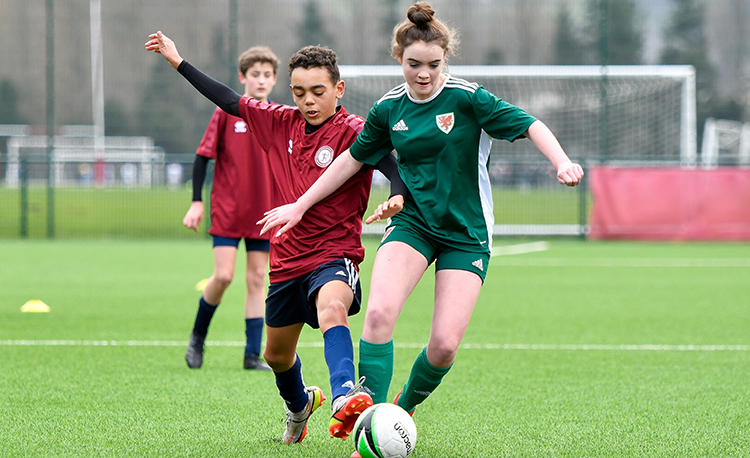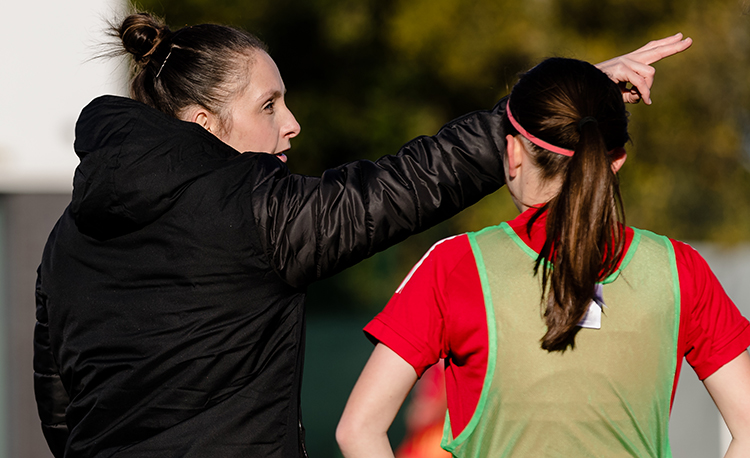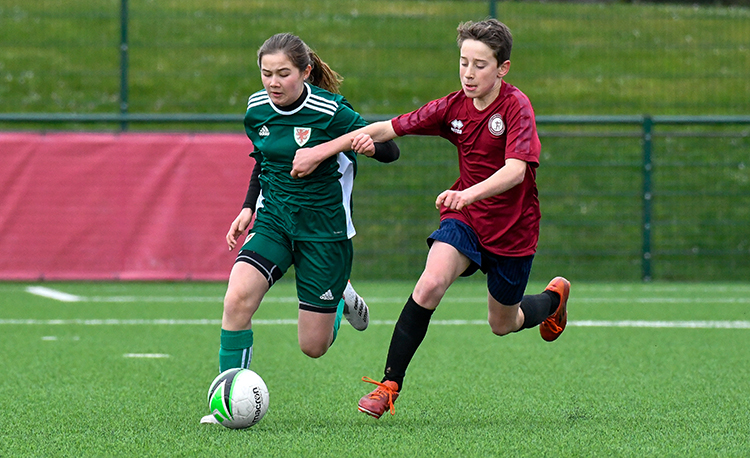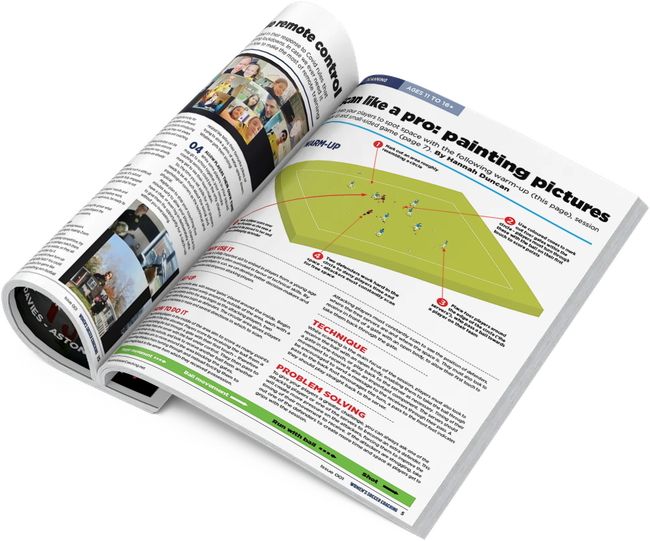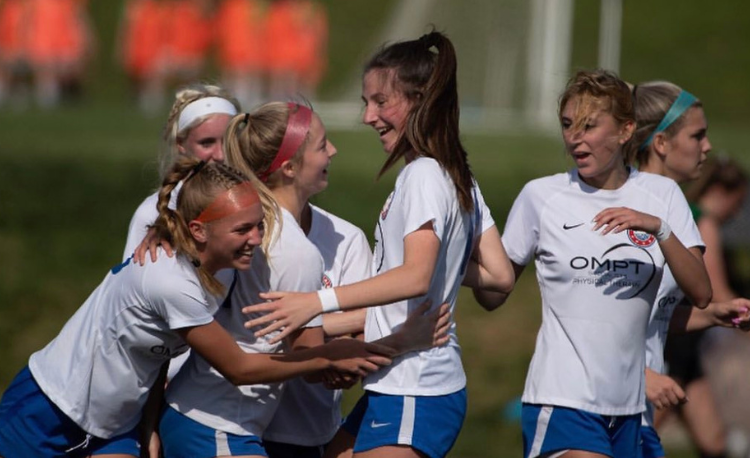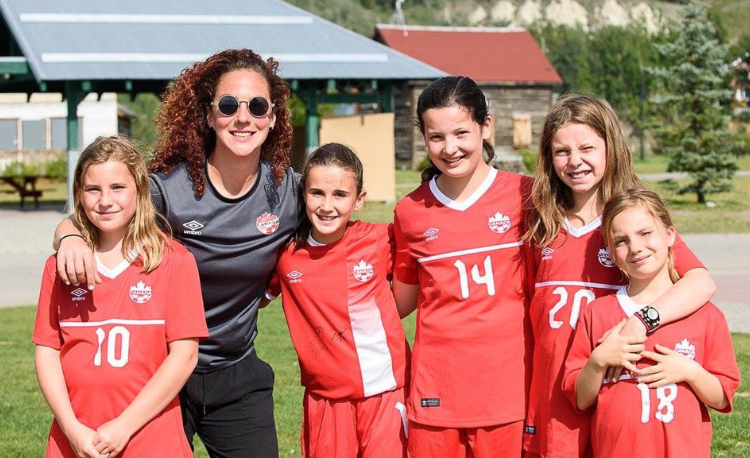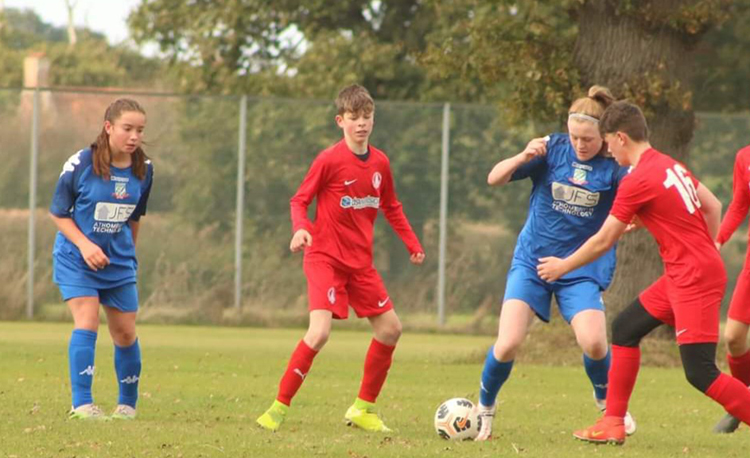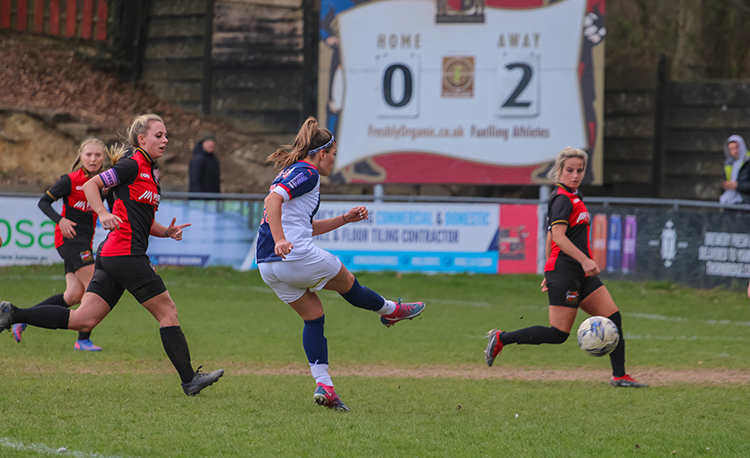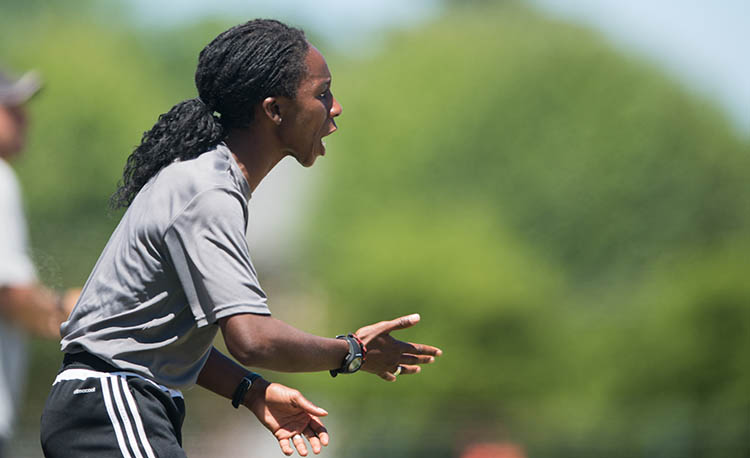You are viewing
1 of your 3 free articles
Preparing the next generation of Wales internationals
Lowri Roberts and Kat Lovett explain how playing against boys is preparing the next generation of female Wales internationals...
Elite girls’ soccer in Wales has just come to the end of a transformative season – the first in which the Football Association of Wales (FAW) Trust Girls’ Academy u14s and u16s squads competed against boys.
When this plan was announced in April 2021, Lowri Roberts - head of women’s and girls’ football at the FAW, and the spearhead behind this new approach - said: “Our aim is simple; to provide more best-v-best opportunities in training and games for our most talented girls.”
She was just as committed to that goal last month, when I caught up with her and colleague Kat Lovett, the girls’ age-group manager at the FAW Trust, who is leading the programme in south Wales.
Both refer several times to “developing the next Jess Fishlock”, the first Wales player to earn 100 caps for the national team.
And it is this high-end achievement the two organisations have set their sights on.
In their latest five-year girls’ soccer strategy, the FAW and the FAW Trust state their commitment to doubling the size of the women’s game in Wales, with a key aim being to qualify for a first major tournament.
Why, then, did they decide youth teams playing against boys was the way to go about it?
“The current programme wasn’t effectively preparing our young female players for international football,” explains Roberts.
“When they were getting into the U15s, U16s or U17s for Wales, they couldn’t physically compete with the other nations. We were way off.
"As a small nation, we can be more agile and creative than some of the bigger nations..."
“We didn’t have a club academy structure for girls, like in England, where there are regional talent centres (RTCs).
“We went back to the drawing board and thought, ‘Okay, we know we need increased contact time with these girls, and we know we need to create best-v-best situations for these girls.’
“The opportunity that kept cropping up was the fact the boys’ academy league and programme in Wales are managed, administered and regulated by the FAW.
“That’s quite unique. In England, for example, it’s not the Football Association that’s in control of the academy system.
“That was a real opportunity for us. We could almost manipulate those rules and regulations to ensure we could fit the girls into the right setting.
“As a small nation, of three million people, we can be far more agile and creative. We’re not constrained in the same way that some of the bigger nations are.”
Elite girls’ football in Wales – what are the key changes?
In April 2021, the FAW and FAW Trust shared a revised player development pathway for girls in the country.
|
The strategy was developed on the back of intense stakeholder engagement over many months, alongside extensive research, some of which was done by looking at other small nations - Roberts cites Northern Ireland, Scotland and Finland as inspirations.
Research has also been done internally.
Though the structure is new, playing against boys wasn’t something unknown for talented girls in Wales.
Lovett said: “About four or five years ago, previous national-team head coach Jayne Ludlow wanted more contact with our players from a younger age group.

“Our regional set-up turned into weekly sessions with players. They were still in their clubs, but they came into our environment once or twice a week.
“We then introduced a games programme, so they played against FAW boys’ academy teams in friendly games organised around their grassroots clubs.”
When girls were asked, as part of the FAW and FAW Trust domestic-game review, whether they found playing against boys to be a positive experience which supported their development, more than 85% said yes.
Focus groups took place, with staff talking to players and parents from various age groups about whether they’d enjoyed friendlies against the boys and whether they liked the idea of bringing the north and south regions together to do it more regularly.
The response was a resounding yes – players and parents alike advocated for what they saw as improving and challenging themselves. Roberts calls such a mindset and drive in young females “inspiring”.
The enthusiasm beforehand doesn’t mean that the transition has been easy, though.
“I know the girls had a tough time at the start,” explains Lovett. “Physically it was really challenging.
“But as soon as we started having our first national environment experiences and they started going into camp environments and playing against other national squads, they realised how much they’ve benefited from the games programme.
“They realised they could compete at a higher standard, play at a higher intensity for longer and their ball speed changed drastically.
“It was like a lightbulb turned on for them all that this game programme makes sense.
“Initially, they weren’t used to losing on a weekly basis. These girls have come from grassroots clubs where they are used to winning every trophy, not conceding goals or getting tackled that often.
“They then come into an environment where they haven’t got a lot of possession and they’re on the back foot.”
What the team are trying to encourage is a change in mindset from, as Roberts puts it, “What was the score?” to “How quickly are we learning?”.
"I know the girls had a tough time at the start. Physically it was really challenging..."
Getting parents on board has been a particular challenge.
“Even though, from a coach’s perspective, we can see an improvement in players from the first half of the season, parents get quite bogged down by the scorelines,” Lovett says.
“If you’ve got a child, you probably want them to win everything. You want them to have trophies, to be happy after every game. Yet sometimes the girls don’t come off [the pitch] happy because it’s challenging and it’s physically demanding.
“They might have made one mistake and conceded a goal. That reflects international football, it’s what they need to wake up to.”
Through the challenges, Lovett and the rest of the coaching team have seen real reward from the progress the players have made.
“The girls just took it in their stride,” she said. “They bounced off each other really well and it made a difference.
“In April, we had a U15s and U16s camp and the staff said the cohesion and collectiveness of the groups now is completely different.
“Considering we’ve had the Covid-19 pandemic in between and they haven’t been on a lot of camps, the players were so professional and well-behaved.
Related Files
“They wanted to learn and take on board as much information as possible. And even if they conceded a goal, or if they lost the game, it was onto the next challenge: what can we do better? How can we improve?
“That’s the difference over the last couple of years - they now see the bigger picture.”
The revised pathway has also meant a rethink on the focus of sessions. While the games against boys have provided an extra physical challenge, they’ve also provided enhanced technical and tactical ones.
The new structure means teaching these elements can be done a bit differently, while still sticking to the heartbeat of Welsh football: the ‘Welsh way’ principles.
Lovett said: “In a national environment, it was always about ensuring we gave players clear focuses and loads of information.
“Now, we can start drip-feeding the information in our academy programme and when we get to national camp, we know we’ve hit X, Y, and Z.
“I think the players have started to realise how much of an impact all the tactical and technical information has had in making sure they’re doing everything quicker - fewer touches, improved ball speed and first touch, checking their shoulder, making sure that if they can’t play forward, can they switch play? If they can’t switch play, can they break lines?
“It’s simple things that in the past we’ve taken for granted when we’ve tried to coach so much on a camp.”
The research that was so key to the implementation of the new strategy is set to continue as the programme progresses.
In a three-year project with the University of South Wales, led by Professor Brendan Cropley, the technical, tactical and physical elements of the game will all be researched and tracked, alongside the psycho-social side, understanding the lived experiences of players.
Focus groups took place with parents and players just before Christmas, with the players having done almost four months of the programme. Feedback was that, although it was challenging, it was enjoyable.
And the FAW and FAW Trust have already begun to look at how to act on the players’ desire to maintain the level of the challenge against the boys, but to also play more fixtures against girls.
They are considering more North v South fixtures, and potential match-ups against English RTCs.
One season into this long-term strategy, the FAW and FAW Trust are clearly committed to building, adapting and innovating as needed to truly put female soccer in Wales on the map and create elite players of the future.
And it seems the players are singing from the same hymn sheet.
Lovett says: “You ask our U12s players what they want to be. They just say: Jess Fishlock.”
‘THIS IS A LONG-TERM PLAN’ - Kat on the lessons of the past year“You’ve got to be patient, and trust in the programme,” says Kat Lovett of the FAW Trust.
|
Newsletter Sign Up
Newsletter Sign Up
Discover the simple way to become a more effective, more successful soccer coach
In a recent survey 89% of subscribers said Women's Soccer Coaching makes them more confident, 91% said Women's Soccer Coaching makes them a more effective coach and 93% said Women's Soccer Coaching makes them more inspired.
*includes 3 coaching manuals
Get Inspired
All the latest techniques and approaches
Women's Soccer Coaching offers proven and easy to use soccer drills, coaching sessions, practice plans, small-sided games, warm-ups, training tips and advice.
We've been at the cutting edge of soccer coaching since we launched Soccer Coach Weekly in 2007, creating resources for the grassroots youth coach, following best practice from around the world and insights from the professional game.
